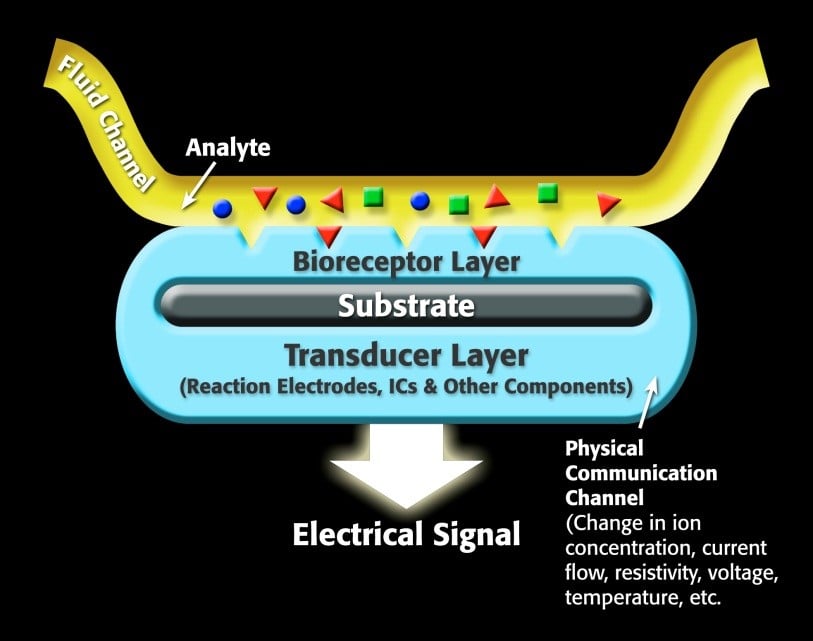Ever since I received one of those wrist worn fitness trackers for Christmas, I’ve been amazed at how sensor technology continues to evolve, especially to improve our health. I’ve been reading many articles and journal papers that have discussed the increasing technological advancements for sensors used in biology/medicine, environmental systems, and bioelectronics which have the potential to change personal healthcare, strengthen security systems, help protect the environment, food, and water supplies, and improve overall our way of life. Most of this is centered on the electrochemical sensor or biosensor. What are these sensors and how are they characterized and validated?
What is an electrochemical sensor?
Electrochemical sensors are used for many applications in diverse industries, including environmental and gas monitoring, medical applications like determining glucose concentration, as well as in the automotive and agricultural industries. Electrochemical sensors come in a wide range of differing designs; they may have two or three electrodes and could be potentiometric, amperometric, or voltammetric. Some sensors are based on organic electronic devices or nano-structures.
Electrochemical biosensors are normally based on enzymatic catalysis of a reaction that produces or consumes electrons (such enzymes are rightly called redox enzymes). The sensor substrate may contain three electrodes; a reference electrode, a working electrode and a counter electrode. The target analyte is involved in the reaction that takes place on the working electrode surface, and the reaction may cause either electron transfer across the double layer (producing a current) or can contribute to the double layer potential (producing a voltage). One can either measure the current (rate of flow of electrons is now proportional to the analyte concentration) at a fixed potential or the potential can be measured at zero current (this gives a logarithmic response).
For a specific biosensor, the sensor contains a receptor, which is a molecule that recognizes the target analyte. The transducer portion of the biosensor converts the recognition event into a measurable signal that correlates with the quantity or presence of the chemical or biological target that is of interest. A generalized biosensor model is show in Figure 1.
